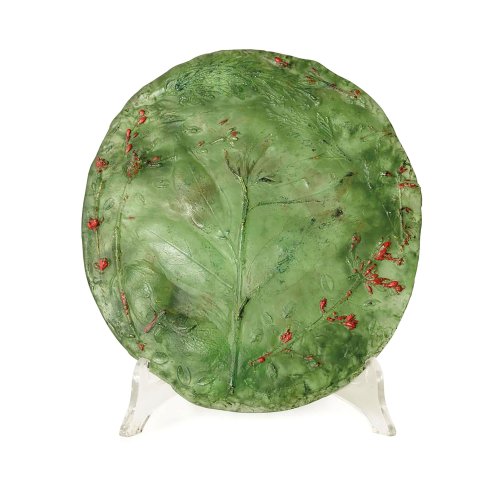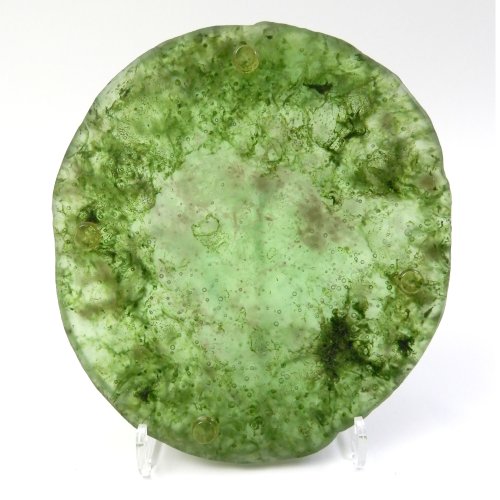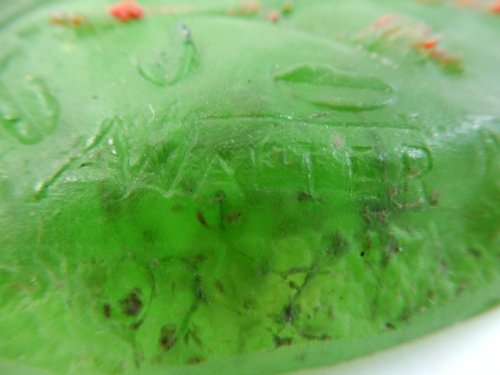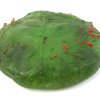Amalric Walter (1869-1959) Art Nouveau relief with twigs and berries
About this piece
This relief, featuring delicate twigs and berries, stands as an exceptional and rare piece by Amalric Walter. Providing insight into the artist's creative journey, Walter, originally trained as a ceramicist in Sèvres, quickly garnered recognition as a skilled glass artist.
His fascination with glass, particularly his experimentation with the rediscovered pâte de verre, led Antonin Daum to invite him to Nancy in the early 1900s to further refine the technique. Walter was granted his own workshop and furnace, initiating his pursuit of crafting exquisite vases, vide-poches, and figurines, a venture that ultimately propelled him to international fame alongside Henri Bergé, the designer behind his creations.
This specific relief signifies a rare window into the early stages of Walter's artistic evolution. Employing a meticulous process, he fashioned a mould and intricately arranged twigs and berries within it using pâte de verre, even partially translucent, with a crystal-like appearance and marbled hues.
The intricacy of this undertaking is highlighted by the uneven form and varied thicknesses. Nevertheless, the charm of the piece lies in the clear visibility of each twig, berry, and leaf.
Walter's artistic finesse is further accentuated by his thoughtful touches, such as painting the berries with red enamel and selectively adding a subtle shine to the twigs.
The result is a unique relief inspired by nature with distinct Art Nouveau influences. The relief is signed with his characteristic signature 'A. Walter, Nancy.'
The condition is excellent; there are irregularities in the glass due to the mould, such as numerous small air bubbles at the back, which is entirely normal for the manufacturing process. However, there are no damages such as chips, polishing, cracks, or any other issues. One of the photos shows the back with light shining through, providing a beautiful view of the glass. It measures 18.5 x 20 cm
Biography:
Amalric Walter (France, 1870-1959) was a
very good glassmaker who was originally trained as a ceramist in Sèvres.
He was already experimenting with pâte de verre when Antonin Daum
persuaded him to join Daum to further develop the making of vases and
figures in the difficult, newly rediscovered pâte de verre. Which he
did, with great success. The beginning however was difficult, he got his
own room and oven at Daum for his experiments. His first success were
the Tanagra dancers, very popular at the time. They were still
monotonous in colour, often light browns.
Later he worked closely
with Daum's chief designer Henri Bergé (1868-1936). He also taught
applied arts at the École professionnelle de l'Est.
Bergé designed
all kinds of small utensils for Walter, often in a colourful palette. They became good friends.
From
1919 to 1935 Walter worked as a self-employed person and started his
own studio. He then continued to collaborate with Henri Bergé, he also
collaborated with various other artists.
Bergé died in 1936, which had a
major influence on Amalric Walter, he himself was already visually
impaired, in 1953 he was even completely blind.
Walter is best
known for his animal figures made of glass paste, but also for his vide
poches, inkwells, boxes and paperweights, often decorated with all kinds
of animals such as butterflies, insects, lizards and flowers. Also very
known are his various pendants, these were often worn with a silk cord
by the most
modern ladies from the better circles in the 1920's.
Besides Henry Bergé Walter also worked with other artists.
Amalric
Walter did not have a high production, each design was made in small
editions, partly because of this his work is sought after and can be
found in various private and museum collections.
Literature:
- François le Tacon & Jean Hurstel; 'Amalric Walter, Maître de la pâte de verre', Edition Serpenoise, Metz Cedex.
-
Philippe Olland; 'Dictionnaire des Maîtres Verriers de l'Art Nouveau á
l'Art Déco Marques & signatures, Éditions Faton 2016. P.326-331.
- Victor Arwas, 'Glass, Art Nouveau to Art Deco', Academy Editions London 1987. P. 353-359.
-
'What is art nouveau & art deco waard', part I&II, editors Rob
Zeegers Janny Stuurman-Aalbers and Reinold Stuurman, Publisher Scriptum
Art , Schiedam, NL and Snoeck-Ducaju & Zoon, Ghent, Belgium, 2001.
Part II, p . 110, 229, 322.
Condition
Good condition, see also the description.
Material:
Pâte de verre
Measurements:
Length: 20 cm
(7,87")
Width: 18,5 cm
(7,28")
Height: 3 cm
(1,18")
Period:
begin 1900-1910
Origin:
France
Artist / atelier:
Amalric Walter,







